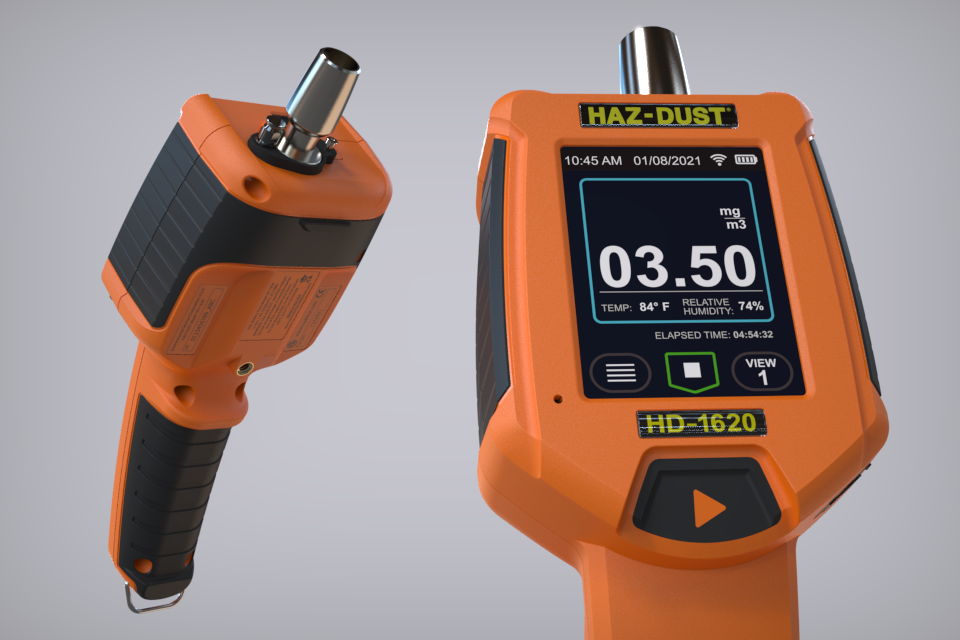
When Environmental Devices Corporation (EDC) wanted to design the next-generation of their HD-1100 handheld respiratory monitor, they returned to Daedalus, so that we could build on the successful partnership we enjoyed with the design of their real-time personal dust monitor.
Though already successful, proven, and accurate, EDC wanted to modernize the look and feel of the HD-1100 handheld respiratory monitor, improve on its existing feature set, enhance its ergonomics, and integrate data logging features, which had previously required a separate device. Our work on the personal dust monitor had introduced us to their specialized industry and allowed us to develop an understanding of the market segment and the end-user needs and wants. Much of the background research we had previously done was applicable to this project, so our first step was to study the requirements and planned features for the next generation device to ensure that we had a complete understanding of the performance and cost targets before starting the design. The next generation device needed to house several new components, including a pump, an auto-zeroing filter and its associated valves, impactors for particle size selection, and a larger screen, while remaining compact and lightweight enough to be easily handheld. It also needed to support easy assembly configuration and absolutely had to remain balanced while in use. We leveraged components that we had designed for the personal dust monitor to improve the aesthetics and usability of the next generation HD-1100 and to achieve a cohesive look across the product line. We re-engineered the sensor to reduce its size and improve accuracy, and our UX designers and software engineers updated the user interface to support the new logging features, as well as GPS functionality, WiFi networking, and a USB cable-based interface. Though EDC originally planned to use an off-the-shelf product enclosure, we convinced them that a unique and purposefully designed enclosure would benefit the next generation of the HazDust product line. Creating the enclosure was both a design and an engineering challenge, and was accomplished through multiple rounds of prototyping and testing. The final enclosure not only accomplished the goals above, it also featured an improved ergonomic handle and a better viewing angle for the display. Apart from the enclosure design itself, another challenging aspect of this project was brought on by a new impactor assembly design. Rather than requiring the user to input information about the selected impactor — a source of potential use error — we enabled the device to detect which impactor was installed based on a series of different resistors for each impactor size. This was an industry first and assures the user that the device is set up properly prior to sampling. We have enjoyed working with Environmental Devices on such interesting projects and are looking forward to continuing a successful and rewarding partnership.